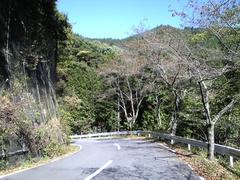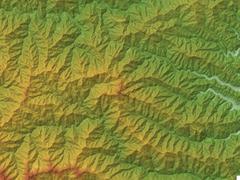
Ōnohara Station Chichibu Visiting Hours, Tickets, and Travel Guide
Date: 04/07/2025
Introduction: Gateway to Chichibu’s Heritage
Nestled in the scenic northern part of Saitama Prefecture, Ōnohara Station is more than just a railway stop—it is a vital entryway to the culturally rich and naturally beautiful Chichibu region of Japan. This guide provides essential information for planning your visit, including up-to-date station hours, ticketing, accessibility, and travel tips. Beyond serving as a passenger hub on the historic Chichibu Main Line, Ōnohara Station offers unique glimpses into rural Japanese life and its enduring industrial heritage, all while being an ideal starting point for visiting local landmarks such as Chichibu Shrine, Mitsumine Shrine, and Hitsujiyama Park.
For detailed travel planning, consult the Chichibu Railway and Mitsumine Shrine Guide.
Table of Contents
- Introduction
- Historical Development of Ōnohara Station and the Chichibu Railway
- Visiting Hours and Ticket Information
- Access: How to Reach Ōnohara Station
- Top Nearby Attractions and Historical Sites
- Guided Tours, Special Events, and Photo Spots
- Station Architecture and Operations
- Community Value and Preservation
- Frequently Asked Questions (FAQ)
- Chichibu Shrine: A Historical Landmark
- Summary Table of Key Attractions
- References for Further Information
Historical Development of Ōnohara Station and the Chichibu Railway
Ōnohara Station is a pivotal stop on the Chichibu Main Line, which has played a crucial role in local transportation since the early 20th century. The original Jōbu Railway began operations in 1901, with the line extended to Chichibu in 1914 and completed to Mitsumineguchi by 1930. Electrification, first introduced in 1918, was modernized further in 1952, reflecting Japan’s broader industrial progress.
The Chichibu Railway has long been intertwined with the transport of limestone from Mount Bukō, a key regional industry, a legacy that continues today via freight operations by Taiheiyo Cement. Rural stations like Ōnohara historically offered robust passenger and freight services, acting as community anchors (Mediarail: Importance of Railway Stations).
Visiting Hours and Ticket Information
- Station Hours: Daily, approximately 5:00 AM to 11:00 PM, aligned with train schedules.
- Ticket Office: Staffed from 6:00 AM to 8:00 PM; outside these hours, use automated machines.
- Ticketing: Automated machines accept cash and IC cards (Suica, Pasmo). Special tickets, such as for the SL Paleo Express steam train, are available online or at major stations.
- Accessibility: Ramps and tactile paving are present; travelers requiring extra assistance should contact Chichibu Railway in advance.
Access: How to Reach Ōnohara Station
Ōnohara Station is located on the Chichibu Main Line, connecting Hanyū to Mitsumineguchi. Travelers from Tokyo can take the Seibu Ikebukuro Line to Seibu-Chichibu Station, transfer to the Chichibu Main Line at Ohanabatake, and reach Ōnohara in 10–15 minutes.
- By Car: Limited parking available; public transportation is recommended, especially during festivals.
- Local Buses and Taxis: Available for onward travel to area attractions.
Top Nearby Attractions and Historical Sites
Chichibu Shrine
A sacred site with over 1,900 years of history, renowned for ornate carvings and its role in the Chichibu Night Festival (Matcha-JP: Chichibu Shrine).
Mitsumine Shrine
A mountainside sanctuary surrounded by ancient forests, dedicated to the wolf deity. Accessible from Ōnohara via bus or taxi; details below.
Hitsujiyama Park
Famous for its spring Shibazakura Festival, showcasing vibrant moss phlox fields and panoramic views.
Chichibu Geo Museum
Engaging exhibits about the region’s geology and mining heritage.
Nagatoro
A riverside town popular for boat rides, hiking, and autumn leaves.
Sites Related to the Chichibu Incident (1884)
Historical markers and museums explore this important peasant uprising.
Guided Tours, Special Events, and Photo Spots
- Guided Tours: Available seasonally, especially during major festivals (e.g., Chichibu Night Festival in December).
- Special Events: The SL Paleo Express steam train operates on select days, attracting railway enthusiasts.
- Photo Spots: Platforms and nearby parks offer excellent views for photographers, particularly during cherry blossom and autumn foliage seasons.
Station Architecture and Operations
Ōnohara Station features a functional, minimalist design with sheltered platforms and essential amenities. It supports both passenger and limestone freight services, maintaining its link to the region’s industrial roots (Mediarail: Importance of Railway Stations).
Community Value and Preservation
Despite reductions in rural railway staffing and services, Ōnohara Station continues to serve as a community hub, supporting local commuters, tourists, and freight operations. Preservation initiatives by the railway company and local groups underscore its role in maintaining Chichibu’s identity and economic vitality.
Frequently Asked Questions (FAQ)
Q: What are Ōnohara Station’s opening hours?
A: Station opens from about 5:00 AM to 11:00 PM; ticket office staffed 6:00 AM–8:00 PM.
Q: How can I buy tickets?
A: Use on-site ticket machines (cash or IC cards); reserve special train tickets online or at larger stations.
Q: Is the station wheelchair accessible?
A: Yes, with ramps and tactile paving; for additional assistance, contact the railway in advance.
Q: When is the best time to visit?
A: Spring (cherry blossoms), autumn (fall foliage), and during the Chichibu Night Festival in December.
Q: Are guided tours available?
A: Seasonal guided tours are available, especially for major events—check the railway website for details.
Chichibu Shrine: A Historical Landmark Near Ōnohara Station
Overview
Located about 700 meters (a 10-minute walk) from Ōnohara Station, Chichibu Shrine is one of the oldest and most revered Shinto shrines in the region. It is particularly famous for its role in the Chichibu Night Festival, a UNESCO-recognized event.
History and Significance
With a history spanning over 1,900 years, the shrine is dedicated to several Shinto deities and features exquisite wooden carvings. It remains central to the area’s spiritual life and annual celebrations.
Visiting Information
- Hours: 6:00 AM–6:00 PM daily.
- Admission: Free; some events or exhibitions may require tickets.
- Accessibility: Mostly accessible, with some limitations in older areas.
Seasonal Highlights
- Winter: Chichibu Night Festival with floats, music, and fireworks.
- Spring/Fall: Pleasant weather and beautiful natural scenery.
Dining and Accommodation
Nearby eateries serve local specialties such as soba noodles and miso potatoes. Accommodation ranges from Western-style hotels to traditional ryokan and budget guesthouses.
For more, see Matcha-JP: Chichibu Shrine.
Mitsumine Shrine: Sacred Mountain Sanctuary
Overview
Mitsumine Shrine, set high in the mountains and accessible from Ōnohara Station by bus or taxi, is a renowned spiritual site with over two millennia of history (Mitsumine Shrine: Wikipedia).
Visiting Information
- Hours: Shrine grounds open 7:00 AM–5:00 PM.
- Admission: Free; some exhibitions may charge separate fees.
- Access: Bus or taxi from Ōnohara Station (approx. 50 minutes).
- Highlights: Wolf guardian statues, ancient architecture, mountain views, and hiking trails.
Summary Table: Key Attractions Near Ōnohara Station
| Attraction | Distance/Access | Features | Best Season |
|---|---|---|---|
| Hitsujiyama Park | ~2 km (walk/bus) | Shibazakura fields, panoramic views | Spring, Autumn |
| Chichibu Shrine | ~700 m (10-min walk) | Historic shrine, festivals, carvings | Year-round |
| Chichibu Muse Park | ~5 km (bus/taxi) | Museums, flower displays, hiking | Autumn, Winter |
| Mitsumine Shrine | ~20 km (bus/taxi) | Mountain shrine, spiritual site | Year-round |
| Nagatoro | ~10 km (train/bus) | Boat rides, hiking, autumn leaves | Autumn, Summer |
Practical Tips for Visitors
- Cash is essential: Many rural vendors and buses do not accept cards.
- Plan ahead: Check train/bus schedules, especially during festivals.
- Dress accordingly: Weather can change quickly in the mountains.
- Language: While some signage is in English, a translation app is helpful.
- Respect local customs: Especially at shrines and during festivals.
Call to Action
Ready to explore Ōnohara Station and the captivating Chichibu region? Download the Audiala mobile app for real-time train schedules, ticket purchases, and curated travel tips. Browse our related articles and follow us on social media for the latest updates and travel inspiration!
References and Official Sources
- Chichibu Main Line, Wikipedia
- Chichibu Railway, Wikipedia
- Importance of Railway Stations (Large or Small), Mediarail
- Mitsumine Shrine, Wikipedia
- Chichibu Railway Official Website
- Chichibu Shrine Travel Guide, Matcha-JP




